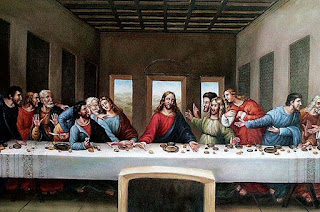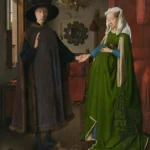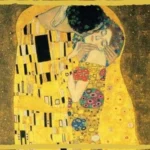
Here are some of the most interesting facts about the Last Supper:
The name says it all. The Last Supper was Jesus’ last supper with his twelve disciples before he was crucified.
This supper is when the First Eucharist occurred. What a thought: First Eucharist at the Last Supper. Fascinating.
The Last Supper attendees, as mentioned in the Bible, were Jesus and his twelve disciples. The disciples present at the Last Supper were:
- Simon Peter
- Andrew
- James the Greater
- John
- Philip
- Bartholomew (or Nathanael)
- Matthew (or Levi)
- Thomas
- James the Lesser (or James the son of Alphaeus)
- Thaddeus (or Lebbaeus)
- Simon the Zealot
- Judas Iscariot (who later betrayed Jesus)
These twelve disciples shared the Last Supper with Jesus, and it was during this meal that Jesus instituted the Holy Communion or Eucharist.
As part of Eucharist (or communion), Jesus took the bread that was on the table, broke it in half (or close to half) and told his disciples to take it and eat it.
The bread represents the body of Christ.
After taking bread, Jesus then took the wine from the table and told his disciples to drink it.
The wine represents the blood of Jesus.
The Last Supper was actually foretold in the Old Testament. A “priest from God Most High” named Melchizedek “brought out bread and wine” And David said that Jesus would be “a priest forever in the order of Melchizedek.“
How big is the Last Supper in feet?
Jesus’ final supper was so important, Leonardo da Vinci depicted the scene in his famous painting titled The Last Supper. The painting itself is huge. It’s about 15 feet by 29 feet (4.6 x 8.8 meters).
What’s interesting to note is there are groups of three in the painting, probably representing the Holy Trinity. Jesus’ figure resembles a triangle; three windows are seen behind Jesus; and the disciples are in groups of three.
The painting itself is in terrible shape. Less than half of da Vinci’s artwork is still on the restored painting.
What are the Last Supper hidden messages?
The notion of hidden messages or symbolism in Leonardo da Vinci’s painting of “The Last Supper” has been a subject of much speculation and interpretation. While some art historians and enthusiasts suggest various symbolic elements, it’s important to note that interpretations can vary, and not all art historians agree on hidden messages. Here are some commonly discussed interpretations:
- Holy Trinity Symbolism: Some suggest that groups of three in the painting represent the Holy Trinity. Jesus’ figure resembles a triangle, three windows are seen behind Jesus, and the disciples are in groups of three.
- Geometric Shapes: The composition of the painting, especially the placement of figures and lines, has been analyzed for geometric shapes, possibly conveying hidden meanings.
- Color Symbolism: Colors and their symbolic significance have been considered. For example, the use of red in the painting is sometimes associated with the passion of Christ.
- Spatial Arrangement: The spatial arrangement of figures, hands, and gestures has been examined for potential symbolic meanings.
- Judas’ Isolation: The isolation of Judas Iscariot, who later betrays Jesus, is often emphasized. Some believe this isolation may symbolize his impending betrayal.
- The Missing Halos: Unlike traditional religious paintings of the time, da Vinci chose not to depict halos around the heads of the disciples, including Jesus, which has sparked discussions about its significance.
It’s important to approach these interpretations with caution, as the true intentions of the artist may not always be definitively known. Furthermore, the condition of the painting over time and restoration efforts have impacted its current appearance. Different scholars and art enthusiasts may offer varying interpretations based on their perspectives and knowledge.
The Last Supper is told in all four gospels, but there’s a different account of the supper in the book of John. He says that the gathering happened the day of Passover, while the other three synoptic gospels say that the gathering happened the day before Passover.
One theory as to why the difference in dates is because they could have used different calendars. So, we should technically celebrate the Last Supper on Wednesday; churches now celebrate the Last Supper on Holy Thursday.
To make things more confusing, Jesus may have used a different calendar than the rest.
A few other incidents happened at that table. Jesus predicted that Peter would deny Jesus’ existence three times before the rooster crowed. Guess what Peter did a few days later?
What’s better is that, during the meal, in a casual tone, Jesus said someone would betray him that night. This led to a mini-conspiracy theory for all the disciples to chew on. Turned out, Jesus knew it was Judas who would betray him.
After supper, Jesus went to the Garden of Gethsemane to pray and asked God not to go through with his crucifixion.
What’s Passover? It’s a celebration to commemorate the exodus from Egypt.
Passover explains why there was wine at the table of The Last Supper. There are four cups of wine at the table during Passover, each symbolizing something different.
When Jesus went to the garden to pray, he told his disciples to stay awake and keep watch for an hour or so. They fell asleep, so Jesus yelled at them. It may have been from eating too much food at the Last Supper.









